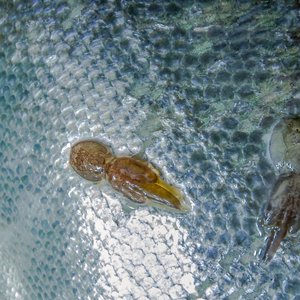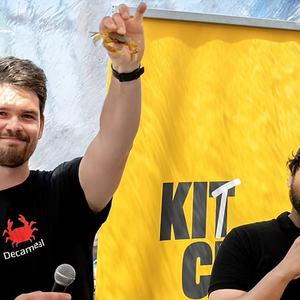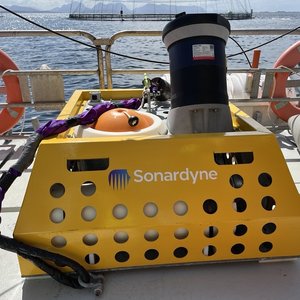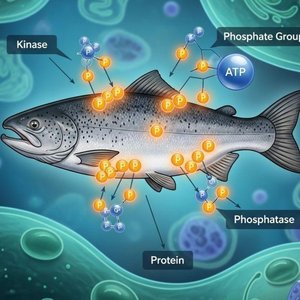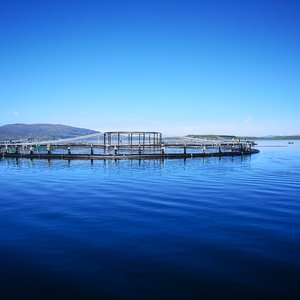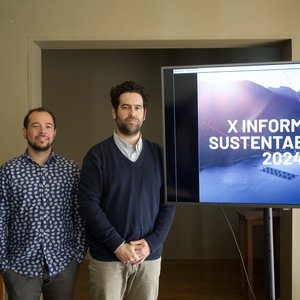An opportunity to refute the fiction and educate the public on aquaculture
The following is the verbatim text of this week's newsletter from Callander McDowell, a U.K.-based company engaged in strategic planning and marketing for the aquaculture Industry:
Friend or Foe[r] : Would consumers buy farmed salmon if they were labelled with a note stating that each two and half foot (0.75 metre) salmon spent their lives in the equivalent of a bath tub of water? Of course this is a hypothetical question since no labelling legislation would require such questions even if it were true. Yet, this very question appeared in the Guardian newspaper this week as part of a serialisation of a book from American novelist Jonathan Safran Foer entitled ‘Eating Animals’ which is due to be published in the UK next month.
Mr Safran Foer is best known for his novels ‘Everything is illuminated’ (2002) and ‘Extremely loud and incredibly close’ (2005) but has ventured into non-fiction with ‘Eating Animals’ which was published in the US last November. The book is a mixture of personal narrative and wider argument concerning his decision to turn vegetarian.
Whilst there cannot be any complaint against anyone writing about their own choices and the reasons for taking them, it must be of concern when a well known author of fiction in attempting to write a factual account so confuses fact with fiction. The book is not available in the UK for another couple of weeks but the extract can be read at http://www.guardian.co.uk/environment/2010/feb/23/jonathan-safran-foer-fish-farming and the book’s website can be found at http://www.eatinganimals.com/
Although the extract is titled ‘the truth about fish farming’ on the web (but not in the newspaper itself), the article focused more on wild catch fisheries. Interestingly, unlike most attacks on fish farming, this author is just as critical of wild catch fisheries too. The section about farming is reproduced here:
- Factory-farmed chickens, ¬turkeys and cattle all suffer in fundamentally similar ways. So, it turns out, do fish. We tend not to think of fish and land animals in the same way, but "aquaculture" – the ¬intensive rearing of sea animals in confinement – is essentially under- water factory farming.
The Handbook of Salmon ¬Farming, an industry how-to book, details six "key stressors in the aquaculture ¬environment": "water ¬quality", ¬"crowding", "handling", -"disturbance", ¬"nutrition" and ¬"hierarchy". To translate into plain language, those six sources of suffering for salmon are: water so fouled that it makes it hard to breathe; crowding so intense that ¬animals begin to cannibalise one ¬another; handling so invasive that ¬physiological measures of stress are ¬evident a day later; disturbance by -farmworkers and wild animals; ¬nutritional deficiencies that weaken the ¬immune system; and the ¬inability to form a ¬stable social ¬hierarchy, ¬resulting in more -cannibalisation. These ¬problems are typical. The handbook calls them "integral -components of fish farming".
A major source of suffering for salmon and other farmed fish is the abundant presence of sea lice, which thrive in the filthy water. These lice create open lesions and sometimes eat down to the bones on a fish's face – a phenomenon known as the "death crown" in the ¬industry. A single salmon farm generates swarming clouds of sea lice in numbers 30,000 times higher than naturally occur.
The fish that survive these conditions (a 10% to 30% death rate is seen as good by many in the salmon industry) are likely to be starved for seven to 10 days to diminish their bodily waste ¬during transport to slaughter then killed by having their gills sliced before being tossed into a tank of water to bleed to death. Often the fish will be slaughtered while conscious, and convulse in pain as they die. In other cases, they may be stunned, but current ¬stunning methods are unreliable
So are wild-caught fish a more ¬humane alternative?...
….Does all this matter enough that we should change what we eat? What ¬conclusion would most selective ¬omnivores reach if attached to each salmon they ate was a label -noting that 2.5ft-long farmed salmon spend their lives in the equivalent of a ¬bathtub of water and that the animals' eyes bleed from the ¬intensity of the ¬pollution? What if the -label mentioned the ¬explosions of ¬parasite ¬populations, increases in diseases, degraded ¬genetics and new ¬antibiotic-resistant ¬diseases that result from fish farming?
Although one can realistically ¬expect that at least some percentage of cows and pigs are slaughtered with speed and care, no fish gets a good death. Not a ¬single one. You never have to wonder if the fish on your plate had to suffer. It did.
Mr Safran Foer is not selective about denigrating the fish farming industry, he also attacks terrestrial animal production suggesting amongst other things that slaugthered cattle are sometimes still concious when they are skinned.
Of course, Mr Safran Foer is a vegetarian and will look for the worst in animal production to justify his choice. That is his right but surely if he wants to share his views (and make money from them too) then he should ensure his book is factual and not another work of fiction.
Although they depend on the public to buy their books, authors are usually able to hide away and remain unchallenged. However, Mr Safran Foer is participating in a web chat on Thursday 25th at 1pm UK time. This can be found at http://www.guardian.co.uk/lifeandstyle/wordofmouth
This is one opportunity to bite back.
Additional reports and items of other interest can be found at www.callandermcdowell.co.uk. If you are interested in rreceiving this newsletter please contact relaks@callandermcdowell.co.uk


